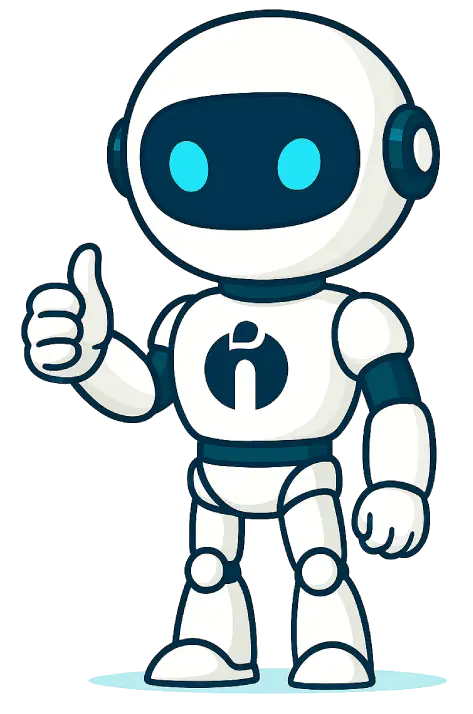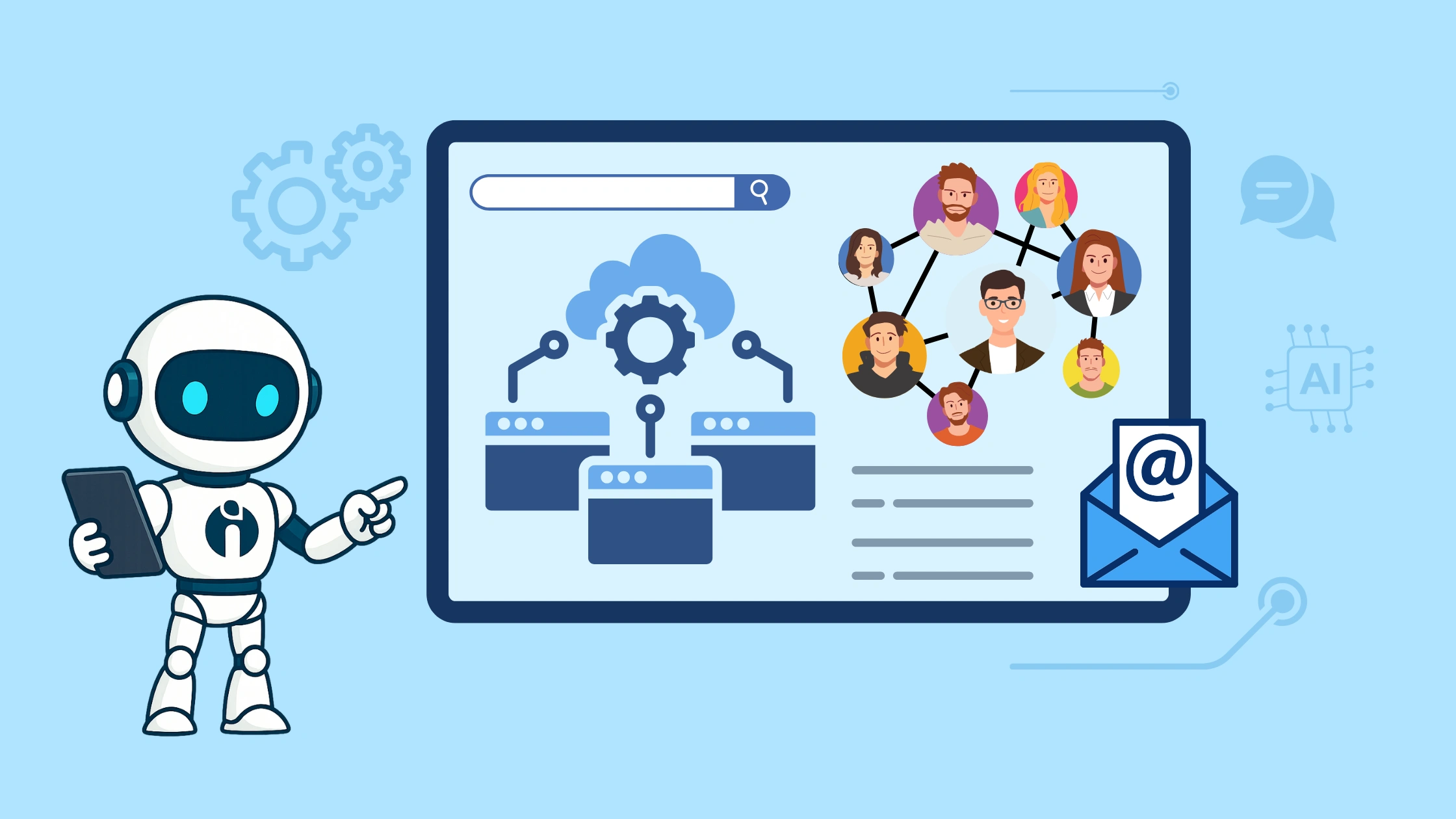TL;DR
- AI recruitment agents connect to ATS to automate sourcing, screening and ranking.
- Integration options include APIs, webhooks, plugins and secure data pipelines.
- Key benefits are faster time-to-hire, better candidate match rates and reduced bias.
- Data mapping, consent and audit trails are critical for compliance.
- Start small with pilot roles, measure KPIs and scale iteratively.
- Vendor choice should prioritise interoperability, data security and transparency.
- Practical governance ensures AI agents add measurable value without risking reputation.
Introduction
Modern hiring teams need more speed, accuracy and consistency than manual processes can deliver. This is why AI recruitment agents ATS integration is becoming essential. By combining an ATS with AI agents that can source, screen, rank and communicate automatically, organisations gain a faster and more reliable hiring workflow.
In this blog, we break down how AI recruitment agents ATS integration works, why it matters and what steps help ensure a secure, compliant and effective rollout. You’ll also see practical examples and measurable outcomes to guide your AI adoption strategy.
What are AI recruitment agents?
Understanding how AI recruitment agents ATS integration works starts with knowing what these agents actually do.
AI recruitment agents are software services that perform recruiting tasks autonomously or semi-autonomously. They can source candidates from job boards and social networks, parse and enrich resumes, rank applicants, schedule interviews and run personalised outreach. When linked to an ATS, these agents become part of a single hiring workflow, reducing manual effort and improving consistency.
How AI recruitment agents integrate with modern ATS systems
There are four common patterns used in AI recruitment agents ATS integration, each aligned to different technical capabilities and business needs, and all rely on the core principle of moving structured data between the AI agent and the ATS.
1. API-first integration
Most enterprise ATS platforms expose REST or GraphQL APIs. AI recruitment agents call these APIs to push candidate profiles, update statuses and fetch requisition details. API integration enables real-time interactions and rich synchronisation. For example, an AI agent can add a scored candidate to the ATS and trigger a webhook to notify hiring managers.
2. Webhooks and event-driven flows
Webhooks let the ATS notify the AI agent about events, such as new applications or candidate stage changes. This event-driven approach keeps systems in sync without polling. It is especially useful for automating actions like interview scheduling and candidate communications.
3. Native plugins and marketplace connectors
Some ATS vendors allow third-party plugins or marketplace connectors. These provide a quicker path to integration with lower development overhead. They are ideal for teams that need a turn-key solution and prefer vendor-supported maintenance.
4. Secure data pipelines and middleware
For complex organisations, middleware platforms provide orchestration, transformation and governance between AI agents and multiple ATS instances. Middleware helps map data fields, normalise schemas and enforce security policies across systems.
According to Zipdo, around 49% of organizations have already integrated AI into their ATS, highlighting how essential mature and reliable AI-ATS integration has become when choosing a recruitment technology vendor.
Data mapping, schemas, and the importance of structure
Successful AI recruitment agents ATS integration depends on data structure. Resumes, candidate profiles and job requisitions must be mapped to defined fields in the ATS. Common issues arise from mismatched fields such as skills taxonomy, employment dates and education entries. A clear mapping plan reduces errors and ensures ranking algorithms have the correct inputs.
Practical tip
Create a canonical data model for candidates and jobs. Align the AI agent output to that model before inserting into the ATS. Use transformation rules in middleware or within the AI agent to normalise job titles, locations and skill tags.
Candidate matching, scoring and fairness
One of the most powerful benefits of AI recruitment agents is improved matching. Agents combine keyword matching, semantic search and predictive models to rank candidates. When integrated with the Applicant tracking system, ranked candidates appear directly in the recruiter workflow.
However, fairness must be explicit. Bias can enter models via skewed training data or proxy features. To manage that risk, include these controls:
- Audit model features for demographic proxies.
- Use blind screening where appropriate to hide protected attributes.
- Track hiring outcomes by group and adjust models if disparate impact appears.
Automation of outreach and interview scheduling
AI recruitment agents use cases greatly reduce administrative load by automating candidate outreach and scheduling. When integrated with ATS calendars and communication templates, agents can send personalised messages, propose slots and confirm interviews without manual input.
Example: A mid sized retailer used an AI agent connected to their ATS to automate first interview scheduling across multiple time zones. The result was a 40 percent drop in scheduling time and a higher candidate experience score on follow up surveys.
Security, consent and compliance
Security is one of the most critical components of AI recruitment agents ATS integration, especially for organisations handling high-volume candidate data.
Data protection is a central concern. Integration must preserve consent, store audit logs and comply with local data laws. Best practices include encryption in transit and at rest, role based access control and clear retention policies within the ATS.
"Treat candidate data governance as a first class feature of any integration plan."
Keep consent records in the ATS so that any automated outreach respects candidate preferences. Ensure the AI agent records decisions and provides human-readable explanations where possible.
Measuring impact and ROI
To justify investment, measure impact across recruiting metrics. Common KPIs include:
- Time-to-hire
- Cost-per-hire
- Quality-of-hire measured by performance or retention
- Candidate engagement rates
Example metrics observed in practice: organisations integrating AI recruitment agents with their ATS report time-to-hire reductions in the range of 25 to 50 percent and significant reductions in screening hours per role. These are conservative estimates gathered from industry reports and user cases across technology and retail sectors.
Implementation roadmap
Follow a pragmatic rollout to reduce risk and build confidence.
- Phase 1: Define goals and select pilot requisitions where volume is high and risk is low.
- Phase 2: Establish data mappings and privacy controls between the AI agent and the ATS.
- Phase 3: Run a controlled pilot, monitor KPIs and collect qualitative feedback from recruiters.
- Phase 4: Expand to more roles and add additional automation features such as scheduling and offer management.
Choosing a vendor and technology considerations
When evaluating providers look for interoperability, clear documentation, support for standards and visible security certifications. Ask for:
- Reference implementations with common ATS platforms.
- Transparent model cards and explainability features.
- Options for on-premises or private cloud deployments if required.
Integration can be delivered by the ATS vendor, the AI agent provider or a third party integrator. Each model has pros and cons. Vendor built connectors are fast but may be less customisable. Custom integrations require more engineering but yield higher alignment with internal processes.
Real world example
Consider a UK fintech that wanted to reduce screening time for software engineers. They connected an AI recruitment agent to their ATS via API, mapped skills to an internal taxonomy and enabled automatic interview scheduling. Within four months they reduced screening hours by 60 percent and increased interview attendance rates by 15 percent. The ATS maintained the single source of truth while the AI agent delivered automation and candidate enrichment.
Common pitfalls and how to avoid them
- Poor data mapping leading to duplicate or fragmented candidate records. Avoid by standardising schemas up front.
- Lack of governance over automated actions. Avoid by enforcing approval gates for offer related steps.
- Ignoring recruiter experience. Avoid by embedding undo controls and transparent reason codes for recommendations.
Conclusion
AI recruitment agents ATS integration is one of the most effective ways to increase hiring speed, improve match quality and reduce manual tasks. The most successful implementations focus on data structure, privacy, transparent models and staged rollouts. Platforms like iSmartRecruit, which offer an AI-powered ATS combined with advanced automation capabilities, make it easier for teams to adopt these practices without disrupting existing workflows. Start with a focused pilot, measure outcomes and build governance to scale confidently.
Frequently Asked Questions (FAQs)
1. What is the simplest way to connect an AI recruitment agent to an ATS?
The simplest route is a vendor-provided marketplace connector or plugin that uses the ATS API. These connectors minimise custom development and provide a supported integration path.
2. How do I ensure the AI agent does not introduce bias?
Use model audits, blind screening and continuous monitoring of hiring outcomes by demographic group. Also prefer agents that provide feature transparency and allow you to exclude potentially biased inputs.
3. Will integrating an AI agent require replacing our ATS?
Not usually. Most modern ATS platforms support APIs, webhooks or connectors that enable integration. Middleware can bridge gaps where needed.
4. How can we measure success after integration?
Track time-to-hire, cost-per-hire, candidate engagement and quality-of-hire metrics. Combine quantitative KPIs with recruiter feedback for a full picture.
5. Are there quick wins for small recruitment teams?
Yes. Automating screening and interview scheduling is often the fastest win. Start with a few high volume roles and expand once you see clear improvements.










.webp)


